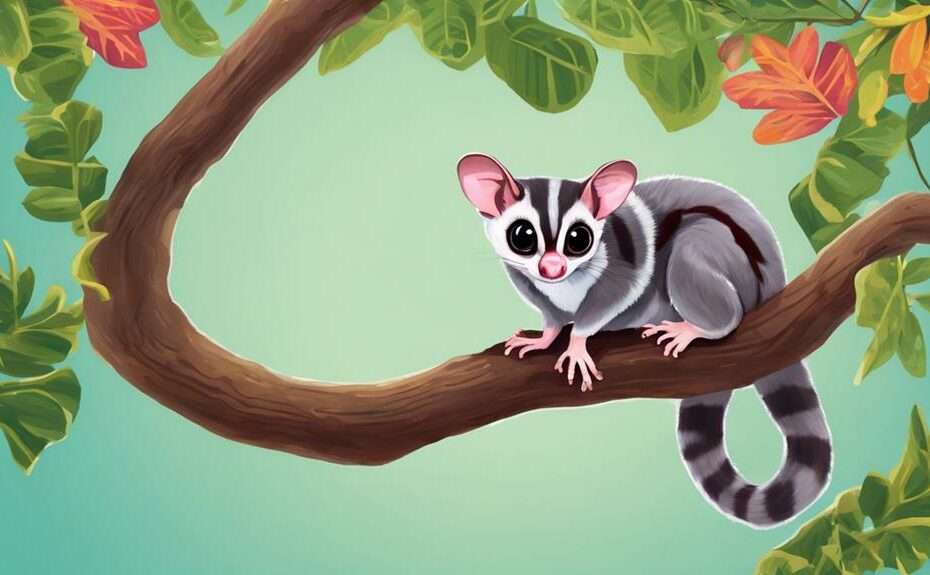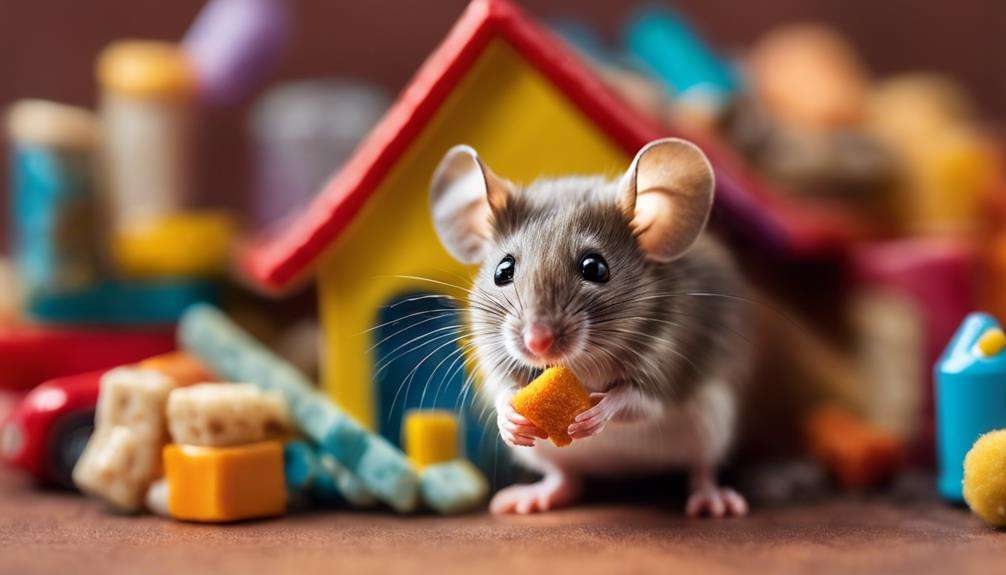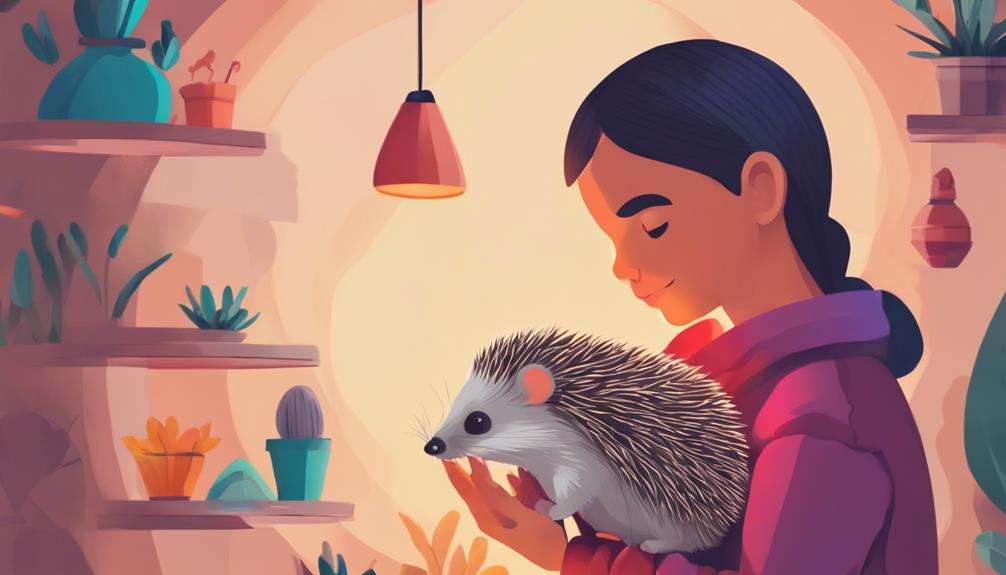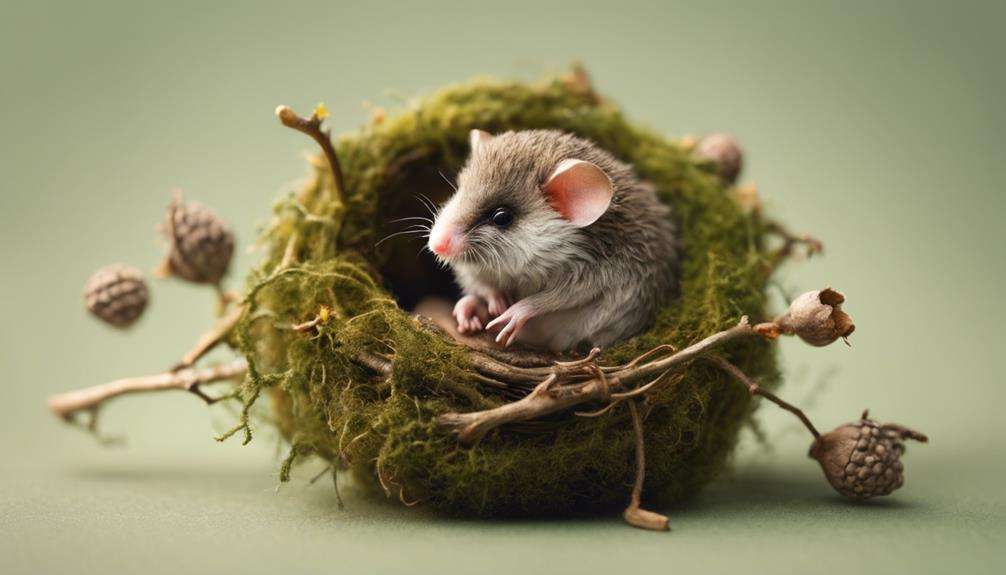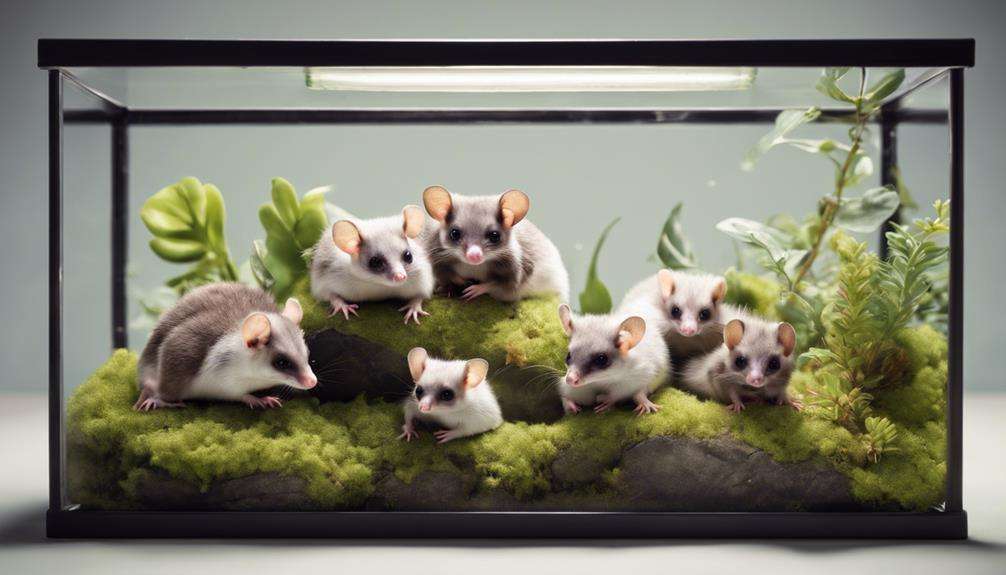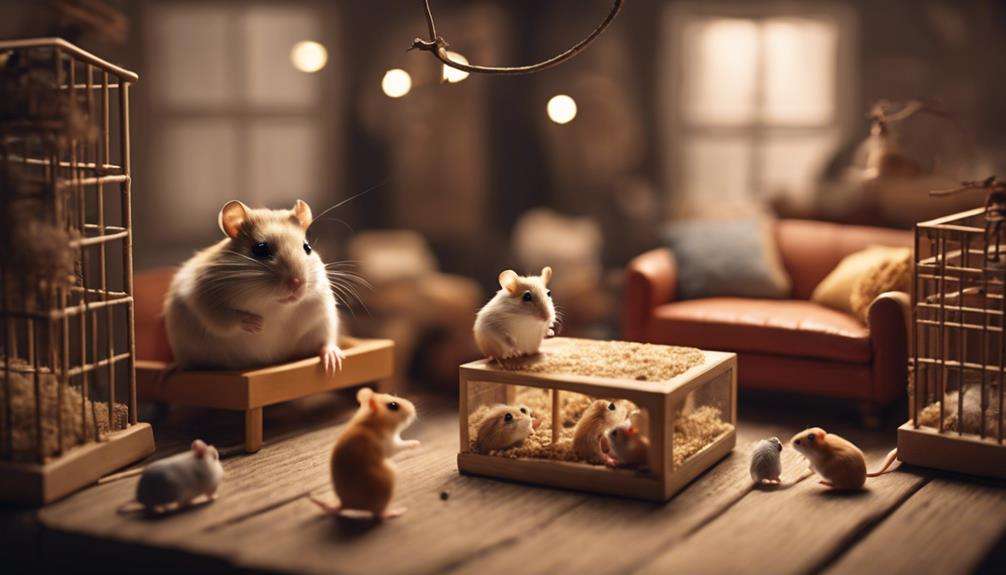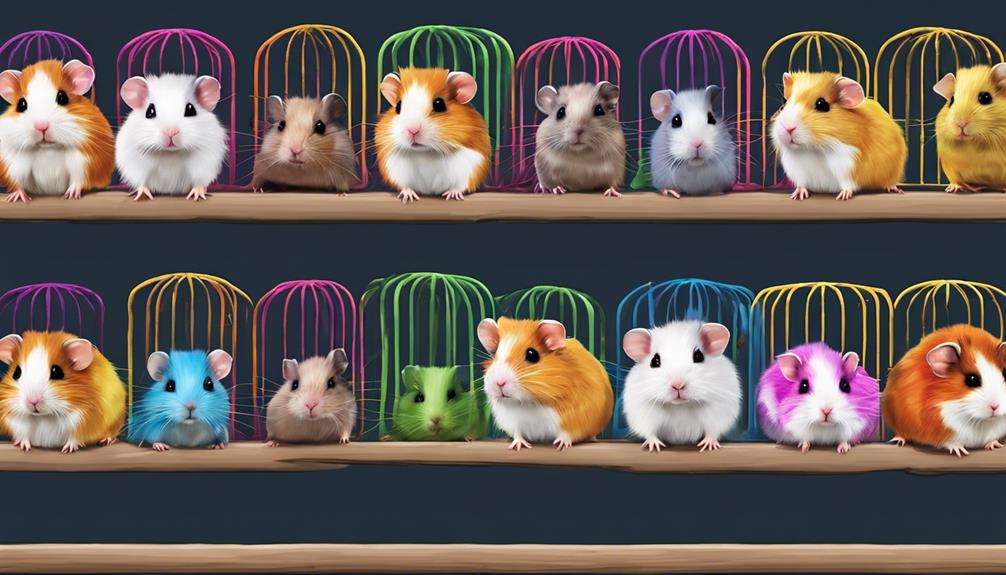Have you ever considered the possibility of having a pet that is both endearing and unconventional?
Visualize this – a tiny creature with unique behaviors and characteristics that set it apart from traditional pets. Imagine the joy of caring for an animal that brings a different kind of charm into your life.
As you explore the world of rodent species, you may find yourself intrigued by the enthralling diversity and intriguing nature of these lesser-known companions. Could one of these fascinating rodents be the perfect addition to your household?
Key Takeaways
- Wood Mouse: Highly social, weight around 0.83 oz, ecosystem balance role.
- Pygmy Jerboa: Smallest rodent, found in deserts, skilled foragers.
- Prairie Dogs: Complex social behavior, live in interconnected burrow systems.
- Guinea Pig: Sociable, unique vocalizations, popular pet for gentle demeanor.
Wood Mouse
Inhabiting forests, fields, and grasslands primarily in Europe and southwestern Africa, wood mice, weighing around 0.83 oz, are fascinating rodents known for their adaptability and unique survival tactics. These creatures exhibit unique characteristics that make them stand out in the rodent world. Wood mice are highly social creatures, often forming close-knit family groups. Within these groups, they engage in intricate social behaviors such as grooming and kissing to recognize and bond with family members.
One of the most striking features of wood mice is their ability to lose their tails as a defense mechanism against predators. This unique survival tactic allows them to escape from dangerous situations, as the tail will regenerate over time. Additionally, wood mice play an important role in the ecosystem by controlling insect populations. Despite being carriers of various diseases, their presence helps maintain a balance in the natural environment. Wood mice are truly remarkable creatures with a plethora of interesting traits that make them an enthralling species to study.
Prairie Dogs
Prairie dogs exhibit intricate social behavior within their coteries, communicating through a combination of vocalizations and body movements.
Their herbivorous diet consists mainly of grasses, roots, and seeds, sustaining their active lifestyle.
Proper care for these unique pets involves providing a habitat that mimics their burrow systems and ensuring a balanced diet rich in the nutrients they require.
Prairie Dog Behavior
Highly social and adept at communication, prairie dogs exhibit fascinating behaviors that contribute to their tightly-knit community structure. These rodents live in interconnected burrow systems known as towns, where they engage in intricate social behaviors.
Communication is key among prairie dogs; they use complex vocalizations and body language to warn others of potential threats, demonstrating their advanced social behavior. Additionally, grooming plays a pivotal role in establishing social bonds and ensuring community hygiene.
Prairie dogs also display altruistic tendencies by sharing food and taking turns standing guard to protect the group. Through their behaviors, prairie dogs not only maintain a cohesive community but also play a critical role in ecosystem health by creating habitat diversity and enhancing soil quality with their burrowing activities.
Prairie Dog Diet
With their primary diet consisting of grasses, seeds, and plants, prairie dogs showcase their herbivorous nature through selective foraging habits in their colonies. These rodents consume a variety of vegetation, including roots, leaves, and on occasion, insects for added protein.
Prairie dogs are dedicated foragers, spending considerable time grazing within their habitats. Their grazing activities not only sustain them but also play an important role in shaping the vegetation of the grasslands and prairies they inhabit. This diverse plant-based diet is a proof of their adaptation to the specific ecosystems they call home.
Understanding and replicating this diet is essential for those considering prairie dogs as pets, ensuring their nutritional needs are met in captivity.
Prairie Dog Care
For those interested in caring for prairie dogs, understanding their social nature and dietary requirements is paramount to ensuring their well-being in captivity. Prairie dogs, popular pets due to their charming antics, are easy to care for when provided with a suitable environment mimicking their natural habitat. These rodents thrive in groups, so it's advisable to keep them in pairs or small family units. Regular social interaction and mental stimulation are essential for their well-being.
As herbivores, their diet should consist mainly of grasses, roots, and seeds. Offering a variety of fresh vegetables and occasional treats like fruits can help meet their nutritional needs. Providing a spacious enclosure with tunnels and chambers for burrowing will keep them active and content.
African Pygmy Squirrel
The African Pygmy Squirrel, the tiniest of its kind, boasts measurements of up to 5.5 inches and weighs a mere 0.63 to 0.53 ounces.
These lightweight creatures are recognized for emitting popping sounds when faced with predators, a unique defense mechanism.
Their interesting color palette includes shades of brown, white, and orange, making them visually enthralling to observe.
Tiny Squirrel Characteristics
Measuring up to 5.5 inches in size and weighing between 0.63 to 0.53 oz, the African Pygmy Squirrel stands as the smallest squirrel species known for its agile climbing abilities and distinctive popping noises near predators.
These pet rodents exhibit shy and jumpy behavior around people, adding to their charm. With sharp claws designed for gripping tree bark, African Pygmy Squirrels navigate their arboreal habitats with ease. Their bushy tails and petite bodies make them adorable companions for enthusiasts.
Endowed with specialized adaptations for their habitat, these squirrels display intriguing behaviors that captivate observers. The African Pygmy Squirrel's unique appearance and alluring antics make them a fascinating choice for those seeking a distinctive pet rodent.
Ideal Habitat Requirements
To provide an ideal habitat for African Pygmy Squirrels, make sure their cage is spacious and equipped with branches and platforms for climbing and exercise. These exotic pets, popular as pets, require plenty of hiding spots and nesting materials like shredded paper to feel secure.
Offering a varied diet consisting of nuts, seeds, fruits, and vegetables is essential for their health and well-being. Stimulate their natural foraging behaviors by scattering food around the cage.
Maintaining a warm and stable temperature between 70-80°F is vital for the comfort of African Pygmy Squirrels. By ensuring these habitat requirements are met, you can create a thriving environment for these fascinating rodents in your care.
Unique Care Considerations
For best care of African Pygmy Squirrels, ensuring a specialized diet rich in fruits, nuts, and seeds is essential to support their thriving in captivity. These tiny squirrels have high energy levels and need ample space to climb, play, and exercise.
Providing a safe enclosure with branches, platforms, and hiding spots is essential for their well-being. African Pygmy Squirrels are social creatures and do well when kept in pairs or small groups for companionship.
Regular veterinary check-ups and monitoring their dental health are important aspects of caring for African Pygmy Squirrels. By meeting their dietary needs, providing a stimulating environment, and ensuring proper healthcare, you can help these unique rodents lead healthy and fulfilling lives in captivity.
Pygmy Jerboa
With a size averaging just 1.7 inches and sporting a tail nearly twice its body length, the Pygmy Jerboa holds the distinguished title of the world's smallest rodent species. These petite creatures, weighing around 0.132 oz, are mainly found in deserts, oases, and valleys, especially in regions like Egypt and Libya. Despite their diminutive size, Pygmy Jerboas are skilled foragers, scouring the forest floor for sustenance such as plants, seeds, roots, and leaves. Due to their specialized habitat requirements, these tiny rodents are seldom kept in captivity.
Pygmy Jerboas play an important role in their ecosystem by aiding in seed dispersal and maintaining soil health. Their small size allows them to navigate through the intricate desert landscapes efficiently. Observing these remarkable creatures in the wild provides insight into their adaptation strategies and survival mechanisms. While their size may be a challenge for captivity, witnessing their natural behaviors in their native habitats is a rewarding experience for those fascinated by the intricate world of rodents.
Chipmunks
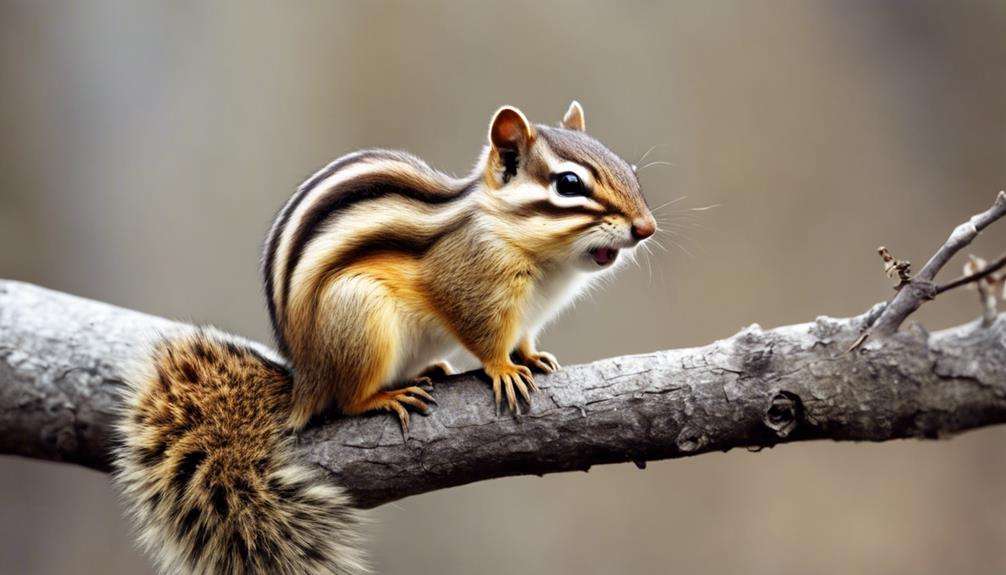
From the area of the Pygmy Jerboa, we now shift our focus to the fascinating world of Chipmunks, small striped rodents popular in North America. Chipmunks, belonging to the Sciuridae family, are known for their bushy tails, striped patterns, and cheek pouches for storing food. These charming creatures are primarily found in North American forests, gardens, and urban areas, where they play important ecological roles.
Chipmunks are diurnal animals, meaning they're active during the day and rest at night. Their activity during daylight hours makes them a popular sight for many nature enthusiasts. Besides their cute appearance, chipmunks contribute significantly to their ecosystems by aiding in seed dispersal. They're skilled climbers, using their sharp claws and agility to navigate trees and structures with ease. Additionally, chipmunks are proficient burrowers, creating elaborate underground tunnel systems for nesting and storing food. Their adaptability and resourcefulness make them fascinating subjects for observation and potential pets.
Chinchilla
Chinchillas, native to western South America, are intriguing rodent species due to their unique characteristics and popularity as pet rodents. Weighing between 1.1 to 1.8 lbs, they're the largest rodents commonly kept as pets. These adorable creatures sport bunny-like ears and a soft, gray fur coat that's highly prized in the fur industry. One of their most distinctive behaviors is their love for dust baths, which help them maintain the cleanliness and health of their fur. Chinchillas have a relatively long lifespan of around 10-20 years in captivity when provided with proper care and a balanced diet.
Being crepuscular animals, chinchillas are most active during dawn and dusk, making them ideal companions for individuals with unique schedules. Their active periods align well with those who may be busy during the day but have time to interact with a pet in the early morning or evening. Considered charming and intriguing pets, chinchillas can bring joy and entertainment to your household for many years to come.
Guinea Pig
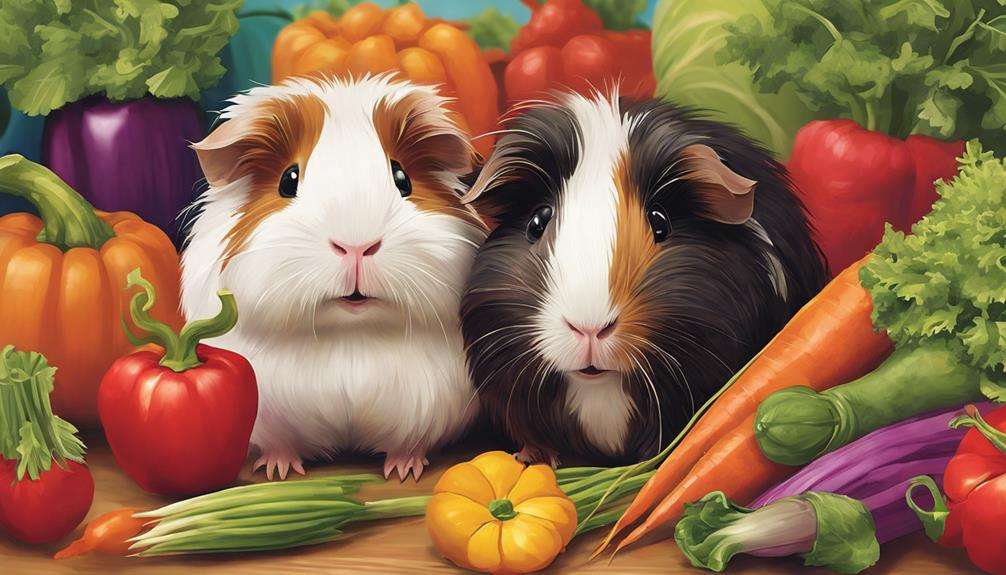
Guinea pigs, beloved for their sociable nature and unique vocalizations, are popular small rodents often kept as pets. These social creatures thrive in groups, displaying behaviors like excited squeaks and joyful popcorning.
To maintain their health, a diet rich in hay, fresh vegetables, and vitamin C supplements is essential to prevent scurvy, a common health issue in this species. With a lifespan of 4-8 years, guinea pigs are known for their gentle demeanor, making them ideal pets for children and families.
Their communication is diverse, ranging from content purring to teeth chattering when agitated or scared. Sporting various coat colors and patterns, some breeds like the Abyssinian showcase rosettes or swirls in their fur.
Guinea pigs are among the most popular pet rodents in the world due to their endearing nature and unique characteristics.
Common Dormouse
The Common Dormouse, a small rodent species known for its hazel brown, fluffy fur and hibernation habits, is an intriguing creature with a surprisingly long lifespan in captivity. This vulnerable species, one of the smallest rodents in the world, typically reaches an average size of 3.9 inches and weighs between .6 to .7 ounces. These dormice exhibit a unique behavior of hibernating for up to half the year to conserve energy and endure harsh conditions within their forest habitats. Their fur, which aids in both camouflage and insulation, helps them thrive in their natural environment.
Common Dormice have an impressive average lifespan of around 12 years in captivity, a remarkable feat considering their diminutive size. However, their existence is threatened by habitat destruction and food scarcity, prompting focused conservation efforts aimed at monitoring population trends and safeguarding their forest homes. Safeguarding these delicate creatures is essential to ensuring their continued presence in the wild.
Hamster
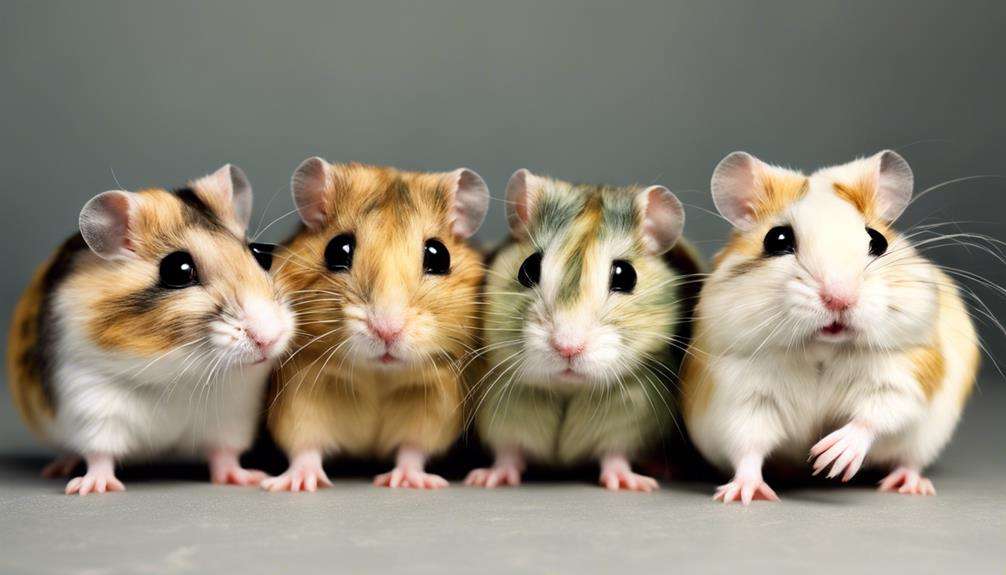
Hamsters, small rodent pets originating in Syria and China, are known for their solitary nature and specific care requirements to thrive in captivity. These creatures, with a lifespan of around 2-3 years, are primarily active during the night, making them a perfect companion for those who are busy during the day.
As herbivores, hamsters enjoy a diet rich in grains, seeds, fruits, and vegetables. Their unique feature of cheek pouches allows them to store food for later consumption, mimicking their natural behavior in the wild.
One of the reasons hamsters are so popular in the pet trade is their cute appearance. With various species and colors available, they've captured the hearts of many animal enthusiasts.
When considering a hamster as a pet, it's important to understand their specific needs, including suitable housing, diet, and handling to ensure their well-being and happiness in captivity.
Frequently Asked Questions
What Is the Best Rodent to Have as a Pet?
For the best rodent pet, consider factors like behavior, training, diet, and care. Choose based on your lifestyle and preferences. Verify research on specific species' needs. Meeting these requirements will lead to a fulfilling pet experience.
What Is the Rarest Pet to Own?
The rarest pets to own are exotic breeds like the Prevost Squirrel, prized for their tri-colored fur and playful nature. With limited availability and specific care needs, these unique rodents captivate exotic pet enthusiasts.
What Are the Most Intelligent Rodent Pets?
You can choose rats as intelligent rodent pets for their problem-solving abilities and enrichment opportunities. They excel in recognizing human behavior, communicate through ultrasound vocalizations, and exhibit complex social behaviors, making them fascinating companions.
What Is the Most Loving Rodent Pet?
When looking for the most affectionate rodents, consider guinea pigs. Their behavior analysis reveals a loving nature, forming strong bonds and responding to your voice. They thrive on social interaction, seeking companionship for a fulfilling relationship.
Conclusion
You may be hesitant to contemplate rodents as pets due to their reputation for being pests, but these fascinating species offer unique qualities that make them rewarding companions.
From the playful behavior of Prairie Dogs to the adorable size of the Pygmy Jerboa, each rodent brings something special to your home.
Embrace the opportunity to learn about and care for these mesmerizing creatures, and you'll be amazed at the joy they can bring into your life.
